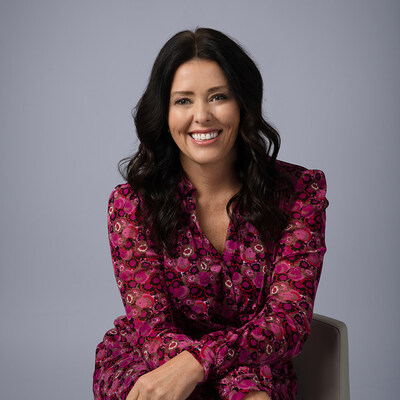When it comes to the state of online marketing for 2009, there’s a saying going around: “Flat is the new up.”
In other words, marketers and agencies are fast coming to the conclusion that the down economy will put such pressure on sales and on marketing budgets that pretty much the best they can hope for in the short term is not to suffer too big a dip in either.
And it’s all but official that the U.S. economy is indeed in a recession. A report on Nov. 17 from the National Association for Business Economics found that 48 of 50 economic forecasters surveyed agreed that we have experienced two or more consecutive quarters of shrinking gross domestic product. Those analysts pegged U.S. economic growth at 0.2% for this year and said they expect to see only 0.7% growth in 2009.
In such a climate, no one doubts that overall marketing budgets — including advertising (online and offline) and promotion — will contract. During its annual “Masters of Marketing” conference in October, the Association of National Advertisers, a trade group with a large number of the country’s biggest brands among its membership, polled its attendees about how they will adjust their current marketing spend in 2009 to account for the down economy.
The bad news is that 33% of the 1,400 respondents said marketing spending will be cut back next year. But another 33% of those polled said they will keep budgets constant, although they might change their marketing mix in the coming year. And almost as many — 27% — said they intend to increase their total marketing spend in 2009 despite the economic crunch. Another 8% said their budgets would stand pat for the year.
LAST IN, FIRST OUT?
Some marketers and industry observers are betting that cuts will be made on a sort of corporate LIFO calculation: Last medium into the marketing mix will be first out. This would suggest that departments will see sharp cutbacks or even elimination of spending in marketing areas that have been considered experiments or learning exercises.
“2009 is not the year for testing,” MediaVest USA President of Investment and Activation Donna Speciale told an audience at ad:tech New York in October. “Brands want to stick with areas that are tried and true.”
On the other hand, the consumer behaviors that have been building over the last few years won’t simply dry up and blow away because household budgets are in a squeeze. People are still spending more time online, still get a growing share of their news, entertainment and product information from new media, and still expect to exert some control over the marketing messages that reach them.
That might be why, when asked to identify the medium that offered their brands the greatest opportunity for growth, those same marketers polled by the ANA last month pointed most often to social media campaigns (28%), and ranked viral marketing/PR (19%) ahead of traditional TV spots (17%), with Web advertising right behind(16%). In the cellar: print ads (7%), direct marketing (7%) and radio (5%).
The props the ANA respondents gave to social networks make sense, according to Dave Friedman, president of the central region for digital agency Razorfish. “The technology around social media is new, but the concept of getting friends to persuade friends to buy your product is a long-standing marketing tactic,” he says. “Social-media marketing is now becoming not just a credible but a critical part of a marketing campaign.”
In the advergaming sector, brands marketing in a tough economic climate will still want to engage with their fans through a branded game, predicts Kenny Rosenblatt, CEO of Arkadium, which both white-labels casual games for marketers and develops brand-specific play titles.
“The ROI on an advergame is still so much better than that of a typical online display ad that even though online budgets get reduced, we expect the number of requests we get to increase,” he says. “Casual games will continue to be used to attract and engage soccer moms because the audience will still be there. Just because we’re in a recession doesn’t mean that people are going to stop going on their computers every day and playing games. It’s a stress reliever, it’s a getaway, and it’s free to the consumer.”
SKILL, WILL AND TILL
Digital marketing will undoubtedly feel the recessionary bite in 2009. But forecasts suggest that the real loser will be marketing through traditional media — TV, radio and publications — and that by comparison, online marketing will fare pretty well. At press time, marketing research firm eMarketer was revising down its 2008 and 2009 forecasts for both total ad spending and online spending. According to eMarketer CEO Geoff Ramsey, spending for interactive marketing of all types should still see an increase of “just below 10%” next year.
In other words, marketers will continue to move money into new media — just at a slower rate than in recent years, including 2008 — while old-media spending will continue to sink.
“The question of how far to commit to online marketing is now, do you have the skill, the will and the till?” says Ramsey. “That is, have you gotten good at doing this new media stuff, does your CEO buy off on these new ways to reach consumers, and do you have the money?”
Companies that have not tested the water in some new marketing arenas such as mobile or virtual worlds will probably not find this a good time to get started, he adds. But those that have gotten some usable experience in online marketing may find this time an opportunity to really put that knowledge to work.
Ramsey points to a recent announcement by cereal maker Kellogg that it will slash its broadcast budget by an unspecified amount next year and put that money into online marketing, where its Special K brand has found greater returns than on TV over the last 18 months. On Nov. 13 the company said it had hired Web marketing agency Pure Visibility to help sharpen those online efforts by providing improved Web metrics.
Measurability will be the crucial weapon in marketers’ arsenals during this financially dark time, and that may kick in to defend digital budgets. But brand and promotional marketers have a more complex relation to online metrics than do direct marketers, since it’s so much harder to tie brand campaigns to sales results. Jim Sterne, CEO of digital agency Target Marketing and founder and current chairman of the Web Analytics Association, says the key is to design campaigns that offer something valuable enough to induce consumers to take an active part.
“If you’re thoughtful, your marketing message isn’t just an ad,” Sterne says. “It’s a specific promotion that drives people to perform a specific task: to buy the shoes, to take the test drive, to sign up for the newsletter. You can measure the impact of your campaign based on that task, and that you can correlate one-to-one.”
If marketers can persuade online visitors to provide some sort of addressable information about themselves, such as an e-mail address when they click through a widget or banner to sign up for a newsletter, then they can use that information down the road at purchase time to track the effect of those early online ads and promotions.
HOMESPUN PROMOS
Over on the promotions side, the downturn may in fact speed up some trends that have already begun, says Bonnie Carlson, president of the Promotional Marketing Association. “We’ll increasingly see a move to more targeted mass media such as cable, and more strategic spending with retailers that results not just in trade dollars, but in strategic campaign planning to build brand equity,” she says. “The old shotgun approach to promotions will be called ever more into question.”
Basically, promotional marketers in the coming year should learn to get clever about doing more with less, Carlson says. That might mean running fewer promotions in a year or avoiding costly media overlays. In a field such as experiential marketing, it might entail running programs in different markets or taking a more localized approach to events.
“It may be that things become more homespun while creating more excitement,” she says. “We’ve got consumer-generated content online; maybe we’ll get to consumer-generated experiential campaigns too, maybe built around the local high-school teams or something. Some small, irreverent company might hit on a user generated event that inspires great interest, and might come up with a way to still have a lot of visibility on a shoestring.”
 Network
Network

